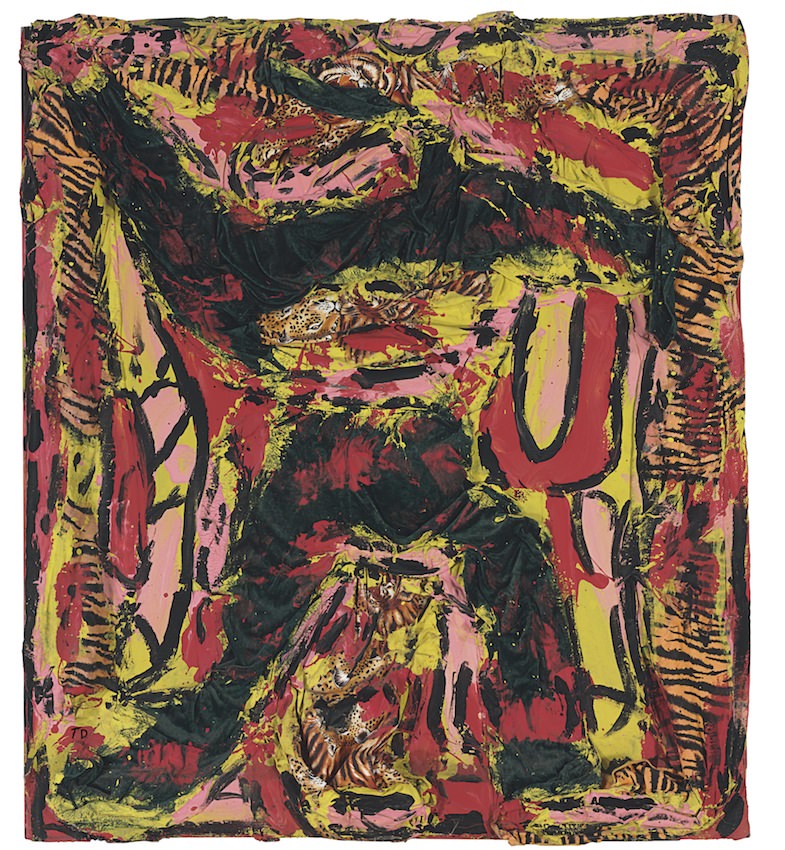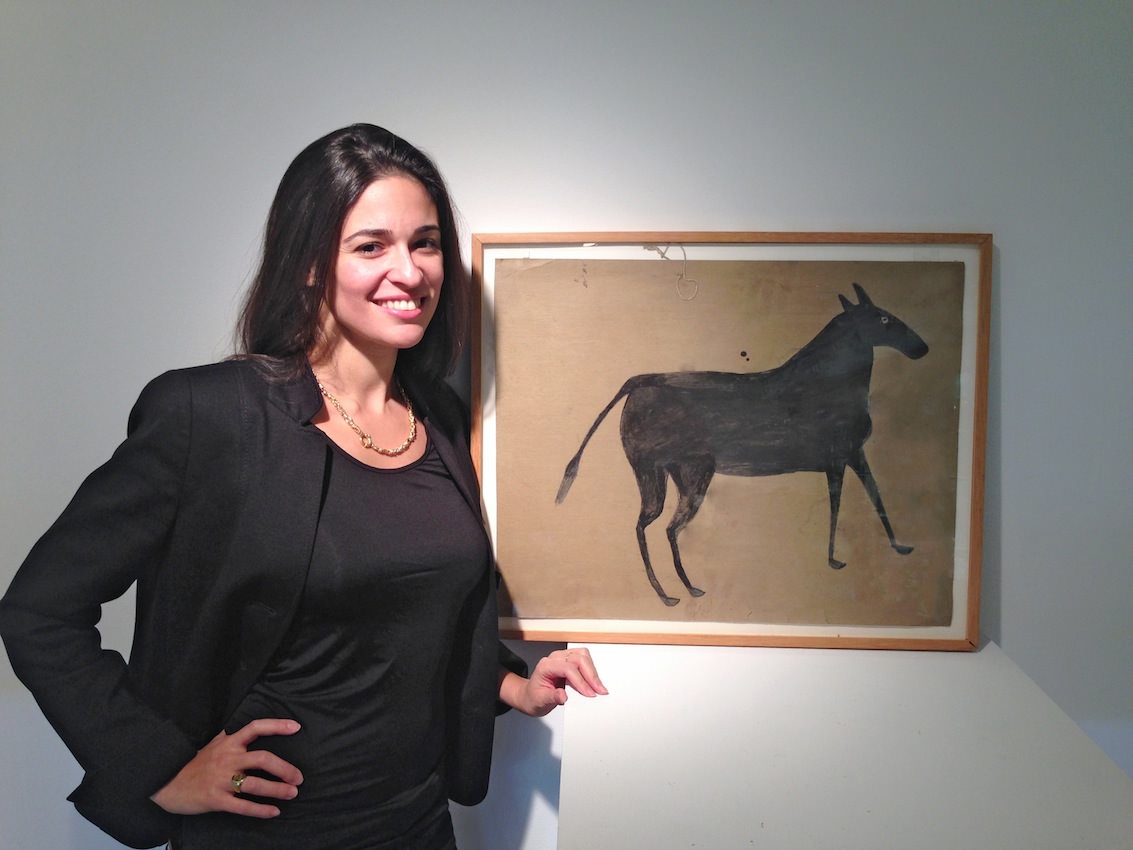New York-based Cara Zimmerman, fondly referred to as the “belle of art brut” by her peers, recently made history when she became the first dedicated specialist in Outsider art at Christie’s. It was a role she was pretty well prepared for, as she is a PhD candidate in the field and has written extensively on Outsider art, recently co-editing “Great and Mighty Things:” Outsider Art from the Jill and Sheldon Bonovitz Collection (Philadelphia Museum of Art with Yale University Press, 2013). Outsider art has been steadily attracting the attention of the art world: not only does its aesthetic relate to other genres of contemporary art, but thanks to new discoveries–ripened by the research of experts such as Cara heavyweight collectors are moving in, collections are being bulked up with new acquisitions, and the art is appearing in major institutions around the world. But why now? What makes this genre so interesting and covetable? Whitewall spoke to Zimmerman to get some answers.
WHITEWALL: What exactly is Outsider Art?

Mother and Child
Carved limestone
CARA ZIMMERMAN: Outsider art–also known as self-taught, visionary, vernacular, or contemporary folk art–can be defined briefly as art by practitioners operating outside academic and apprenticeship traditions.
The first glimmers of the field took shape in the early 1920s, when psychiatrists in Europe starting documenting art by asylum patients. Artist Jean Dubuffet coined the term “art brut” (meaning, literally, raw art) in the 1940s, championed the work of psychologically distressed artists, and encouraged trained artists to strive for the immediacy and emotion attained by mentally ill artmakers. For Dubuffet, art brut practitioners were liberated, as they did not seek art world recognition and they worked outside the confines of academic aesthetic legacies.

11 1/4 in. high
In the 1970s, scholar Roger Cardinal expanded this concept of art brut in his landmark book Outsider Art (1972). Rather than maintaining the constraints of insanity implied by asylum art and art brut, the term Outsider art has encompassed a range of art and artists existing outside the academic art canon.
WW: So does it make sense to apply academia to it now? Why do you think it appeals to people so much in recent years?

Thornton Dial
CZ: Outsider art is a rising field that has garnered a lot of attention in the last few years: since 2008, there have been major exhibitions in important institutions around the world, including the Philadelphia Museum of Art, the Hayward Gallery in London, the High Museum of Art in Atlanta, and the Museo Reina Sofia in Madrid. Outsider artists were an integral part of “The Encyclopedic Palace,” the central pavilion exhibition of the 2013 Venice Biennale. In December 2014, the Metropolitan Museum of Art in New York announced a substantial acquisition of material by self-taught and outsider artists, while the National Gallery of Art in Washington D.C., announced plans for a major upcoming show to consider parallels between outsider and “mainstream” artists.
All this is to say, Outsider art is having a moment. I think it has hit its stride in part because the postmodern art world has embraced a range of different voices. As African American and Latin American artists have become powerful forces, and as digital art and photography have developed as fields, we’re seeing an acceptance of many aesthetics, messages, and backgrounds that offer a vast range of visual and conceptual approaches to art. Outsider art is a significant part of this increasingly diverse conversation, as it often speaks about popular culture and the human experience in ways that embrace, and emerge from, the multiplicity of voices. An outsider artist may be an African American photographer, or a European watercolorist, or a Mexican sculptor.

Assemblage
Fabric and paint on plywood
48 1/2 x 43 1/2 in.
WW: How do you think attitudes in the art world have been changing to the genre since you started working in it?
CZ: When I applied for PhD programs in the winter of 2006, very few art history departments at American universities would consider supporting a dissertation in Outsider art. Now, I’m hearing about students including outsider artists in their graduate research from a variety of different angles. While this may seem like a minor point, I think it’s a reflection of a larger shift in attitudes, as academic programs tend to follow and reflect larger market and museum trends.
Market values for the blue-chip outsider artists have skyrocketed. In 2014, Christie’s sold a drawing by Henry Darger for $749,000, a sculpture by William Edmondson for $263,000, and a construction by Thornton Dial for $50,000. These are auction records for the artists, and reflect the very real and substantial numbers outsider artworks are able to garner. As the market value for outsider artists continues to climb, the work commands more attention and is taken increasingly seriously.
I’ve also seen a shift in how the work is viewed, and who is interested in the material. As Outsider art has been increasingly considered high art rather than as marginalized forms of creation, it has been embraced by collectors of postwar art, as well as collectors of traditional folk art.
WW: How did you get into it?
CZ: I grew up surrounded by traditional American folk art. My mother collects carousel animals, and from my earliest memories we had jeweled, loping horses, cats, and giraffes encircling our living room. With that sort of exposure, it’s hard not to love the idiosyncratic nature of folk expression. I also got early lessons in connoisseurship from these wooden beasts, as they showed me that sophisticated craftsmanship and creativity are present in all great folk art. My discovery of Outsider art was more of a happy accident. I was a folklore and mythology major at university, and wrote my undergraduate thesis on the evolution of fairy tales, from traditional Italian stories to contemporary reinterpretations of earlier motifs. In my research, I came across a book on Henry Darger, whose oeuvre in ways chronicles a modern fairy tale. I was fascinated.
My first job in the art world was as the assistant editor for New York’s American Folk Art Museum, an institution that houses and exhibits both traditional folk and Outsider art. My interest grew with each new project at AFAM, and so I decided that a PhD program, with a focus in Outsider and folk art, was the next step for me. I later worked at the Philadelphia Museum of Art and as the executive director of the Foundation for Self-Taught Artists in Philadelphia before moving to the market side of the art world.
WW: You’ve just made history at Christie’s as their first dedicated specialist in the field: how did the role there come about?
CZ: A decade ago, Christie’s began to explore Outsider art, and in 2003 and 2004 held several notable and successful sales. However, the auction house really considered making the material a more permanent part of the auction roster in January 2014 following the auction of the Kristina Barbara Johnson collection of folk and Outsider art, which included an important range of works by self-taught artists. When a huge number of bidders and new registrants emerged because of the Outsider material, Christie’s leadership recognized that the field was really able to thrive in an auction house setting. I joined the company shortly thereafter. It’s exciting, and daunting, to build interest in Outsider art within such a major art world institution.
I should note that working on Outsider art is one half of my role at Christie’s, as I’m also a specialist in American folk art. The company has promoted traditional American folk and decorative arts consistently and successfully, so on that front, I’ve stepped into an established role with an established collector base. Outsider art is in a different place. It’s a rising field, and I’m focused on attracting new interest and ensuring that Christie’s is the leading resource for this type of art.
WW: Any particular favourite artworks or artists you’re excited about at the moment?
CZ: I have two long-term favorites: Henry Darger and Martín Ramírez. Both worked in large scales, with pieced paper, and without formal training, but their aesthetics were quite different. Darger’s works are horizontal format watercolor drawings. Each includes freehand rendering, carbon paper-traced images from coloring books and magazines, and solid, delicately applied swaths of watercolor. Darger’s works revolve around a central story of his own creation: a world marked by a child slave rebellion led by a group of pre-teens called the Vivian Girls, who engaged in a series of battles with their adult overlords to gain freedom. Each of Darger’s drawings depicts an element of the Vivian Girls’ quest, be it a gruesome battle scene (Darger wasn’t afraid to depict graphic violence) or a moment of carefree skipping through a field between attacks.
Ramírez did not have such a linear narrative to his drawings, but he certainly repeated images and subjects that affected him, including Madonnas, horse and riders, and trains and tunnels. He fashioned a remarkable visual vocabulary of solid, strong graphite and charcoal lines, which he masterfully manipulated to create depth without perspective and mass without shading. His art was made on materials he could find within the DeWitt State Hospital in California (where he was institutionalized with a Schizophrenia diagnosis), and he often utilized the backs of discarded doctors’ meeting minutes. His imagery was taken from popular magazines and films and from his past: his Madonnas and trains draw from memories of Mexico and his stint working on the California railroads.
Darger and Ramírez demonstrate the power of art at its core and in many ways define the category of outsider art. Both men created to enhance their daily lives and had no real aspirations of fame or recognition. Darger, to our knowledge, never shared his work with others, creating his artistic universe for himself. Ramírez lived in DeWitt, where he couldn’t—or wouldn’t—verbally communicate with his fellow patients or with doctors. He kept his drawings under his bed and would present them as his main means of communication with the world.
Other, perhaps lesser-known favorites to keep on the radar include Ronald Lockett (whose work will in the subject of an upcoming retrospective at the University of North Carolina’s Ackland Art Museum), JJ Cromer, Chris Hipkiss, Jon Serl, and George Widener. I think we’ll be seeing more of these artists in the next few years.









